How should I approach setting up my home office for maximum productivity and comfort? This is a question many of us are asking these days as working from home becomes more common. Crafting a good home office setup is more than just placing a desk and chair in a quiet corner. It’s about creating a space that enhances productivity, supports your health, and incorporates technology seamlessly. Let’s walk through some of the key considerations to help you establish a home office that not only meets these criteria but also reflects your personal style.
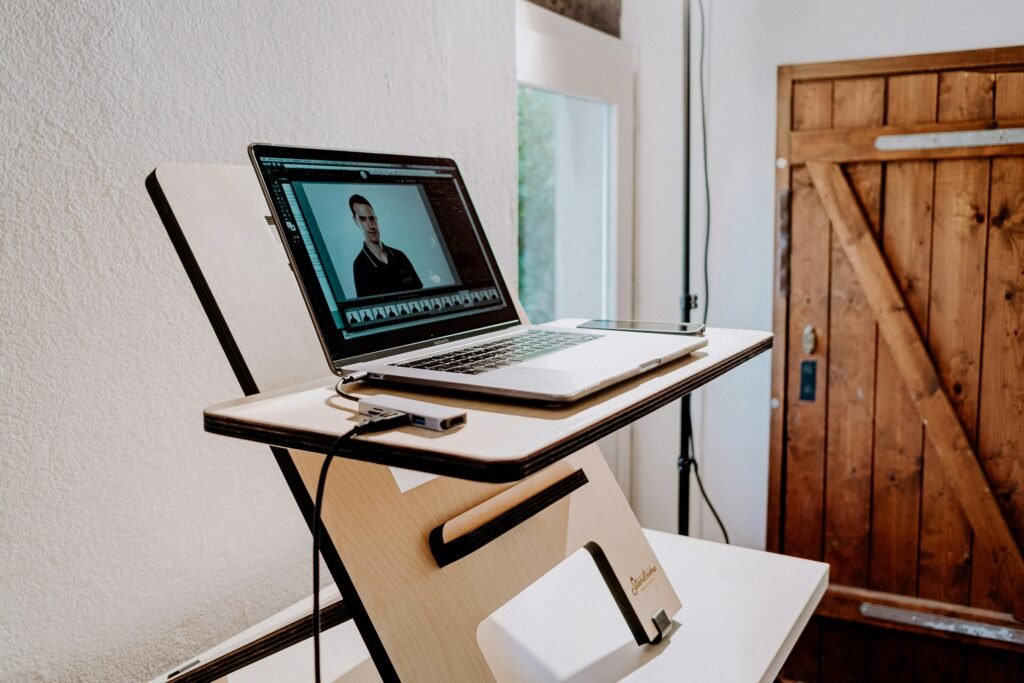
Understanding the Importance of a Good Home Office Setup
Creating a functional and comfortable home office setup is crucial because it directly influences how effectively I can work from home. It’s about finding a balance between my personal and professional environment. This balance is key for maintaining productivity and personal well-being. Working from home offers flexibility, but without an appropriate setup, it can lead to discomfort and decreased efficiency.
Benefits of a Well-Designed Home Office
Having a well-thought-out home office can profoundly impact my productivity and mental health. A proper setup reduces distractions, minimizes physical discomfort, and promotes a professional atmosphere, even within the comfort of my own home. Additionally, my well-being benefits from a conducive setup as it helps maintain a clear boundary between work and personal life.
Assessing My Space
Before jumping into buying new furniture or gadgets, I need to assess the available space in my home. Understanding my space constraints and possibilities is the first step to creating a home office that works for me.
Choosing the Right Location
Selecting the ideal spot for my home office is crucial. I should look for a location that minimizes distractions and offers natural light if possible. It’s important to consider factors like noise levels, foot traffic, and proximity to household activities. If space is limited, I might need to get creative with my choices.
Space Utilization
Making the most of my available space often requires a bit of ingenuity. I must think about how to maximize efficiency within the space I have. This could involve rearranging furniture, using vertical storage solutions, or repurposing certain areas in my home to fit in a small office.
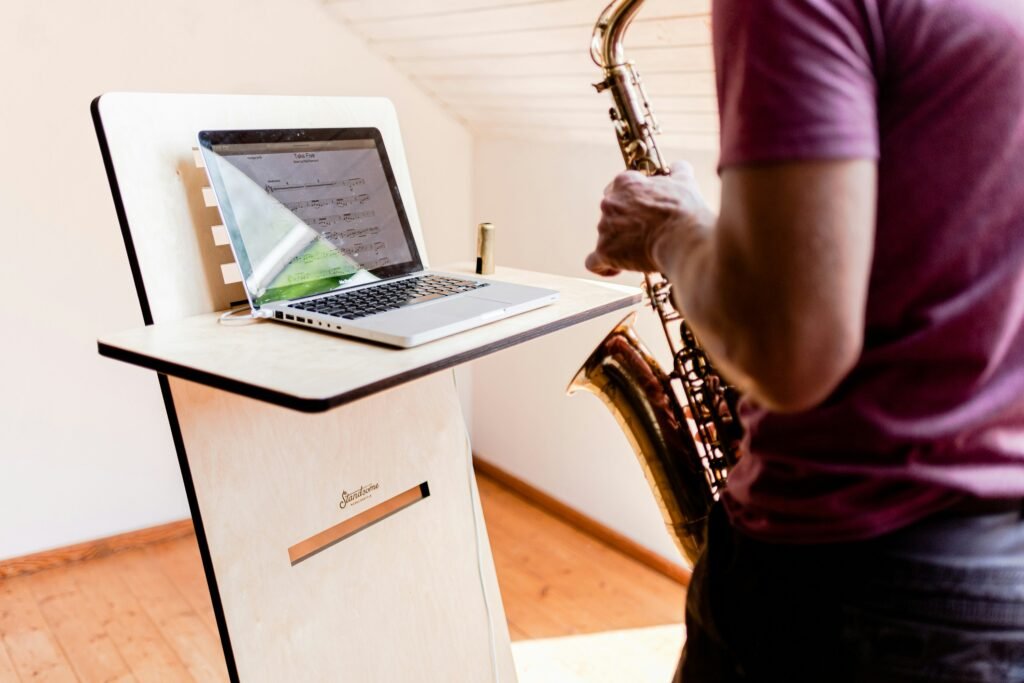
Essential Furniture and Equipment
Once I’ve assessed my space, it’s time to focus on the essentials. The furniture and equipment I choose can significantly affect my work experience and overall productivity.
The Perfect Desk
A good desk is the centerpiece of any home office. Depending on my work, I might need a large workstation or something more compact. Features like height adjustability can be beneficial to switch between sitting and standing positions throughout the day.
Choosing a Comfortable Chair
An ergonomic chair is an investment in my health. Since I might spend several hours in this chair daily, it should provide adequate support for my back and promote good posture. Adjustable features such as lumbar support, seat height, and armrests are essential.
Technology Needs
Technology is a cornerstone of any modern home office. I need to ensure I have the right tools for my work tasks, including a reliable computer, high-speed internet, and communication tools.
Computer and Monitors
The type of computer I need depends on the nature of my job. A desktop setup might be ideal for stationary work, while a laptop offers flexibility and portability. Additional monitors can also enhance efficiency by providing extra screen real estate.
Internet and Connectivity
Reliable internet is crucial for remote work. This might mean getting a faster internet plan or investing in a quality router. Wired connections are typically more stable, so using an Ethernet cable can reduce connectivity issues during important tasks.
Organizing and Decluttering
A clutter-free workspace enhances focus and efficiency. In my case, organization plays a vital role in maintaining a productive environment.
Effective Filing and Storage Solutions
Proper filing solutions help keep documents, office supplies, and personal items orderly. Depending on my space, vertical shelving or under-desk storage might be necessary. It’s also helpful to go digital with documents when possible to reduce physical clutter.
Cable Management
With numerous devices comes the potential for tangled cables that create chaos. This is where cable organizers or a few well-placed clips can help conceal and arrange cables, reducing visual clutter and making my workspace safer and more pleasant.
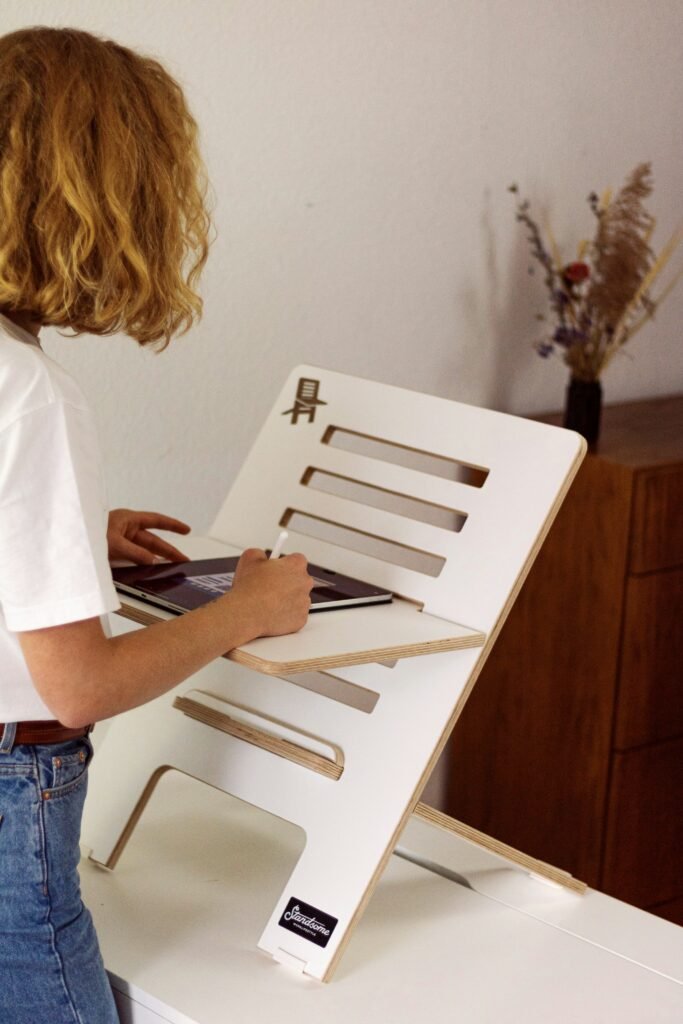
Lighting and Ambiance
Lighting sets the mood of any workspace, impacting both my productivity and comfort.
Importance of Lighting
My home office should be well-lit to reduce eye strain and maintain focus. Ideally, I’d like to combine natural light with artificial light to create a balanced lighting solution that minimizes glare on screens.
Adjusting Ambiance to Your Needs
I can personalize the ambiance of my home office to suit my work style. This might include choosing calming colors, incorporating plants, or using essential oils to create a relaxed atmosphere. Adjusting these elements can keep me motivated and focused.
Health and Ergonomics
Spending long hours at my desk requires attention to ergonomics to prevent health issues.
Posture and Desk Arrangement
Maintaining good posture is essential to prevent strain and discomfort. My chair should support my lower back, and my feet should rest flat on the floor or a footrest. Ideally, my screen should be at eye level to avoid neck strain.
Regular Breaks and Movement
Breaking up my work with regular breaks is important to keep my body active and avoid fatigue. Short walks or stretching exercises can be refreshing and beneficial for my overall health.
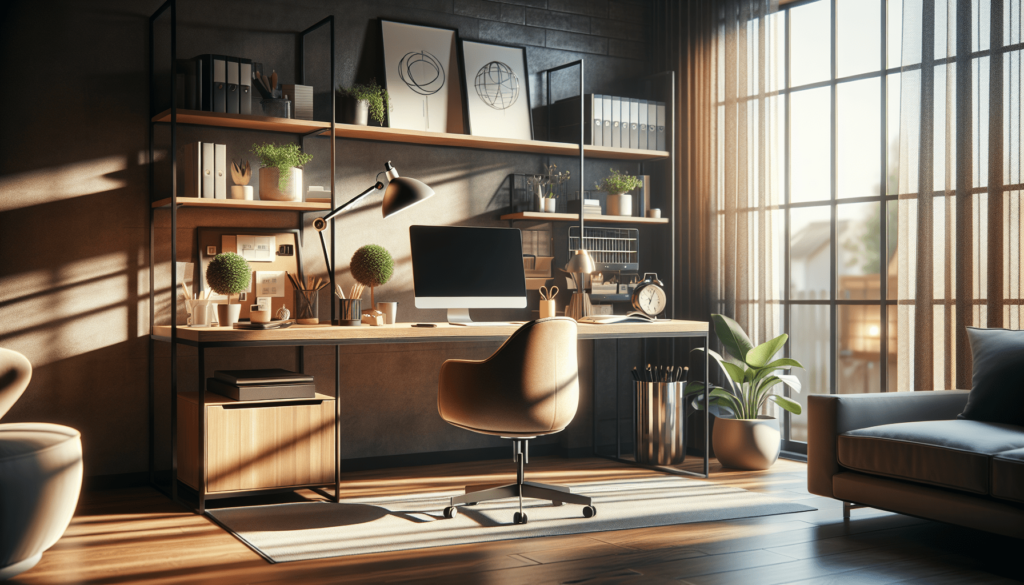
Personalizing My Home Office
Adding personal touches to my office can create an environment that inspires and motivates me.
Adding Personal Touches
Incorporating personal items such as photos or art into my space can make it feel more inviting. These personal touches can provide comfort and help reduce work-related stress.
Ensuring Privacy and Noise Control
Preserving my privacy while working at home is crucial. Using noise-cancelling headphones or soundproofing certain areas can help minimize distractions and maintain focus.
Staying Productive
A well-organized office supports productivity, but I need to implement strategies to stay productive consistently.
Time Management Techniques
Using productivity tools and techniques such as the Pomodoro Technique or task lists can help manage my time effectively. These methods encourage focused work periods followed by short rests, improving concentration and efficiency.
Work-Life Balance
Maintaining a work-life balance is critical when working from home. Setting boundaries, designating work hours, and ensuring I “clock out” can help prevent burnout and interferences with personal time.
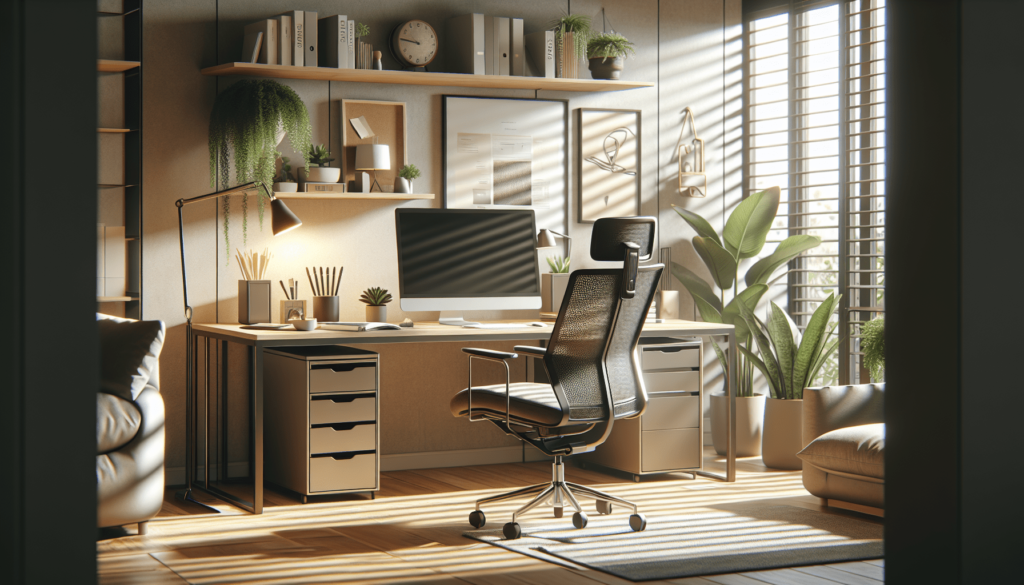
Conclusion
By integrating these elements into my home office setup, I can create a space that supports my professional needs while being comfortable and personalized. It requires thoughtfulness and planning, but the rewards in productivity and personal satisfaction are worth the effort. A well-designed home office not only amplifies my ability to work effectively but also enriches my quality of life, proving once again that where I work can influence how well I work.



